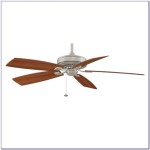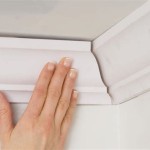How To Cut Crown Molding On A Vaulted Ceiling
Crown molding adds a touch of elegance and sophistication to any room. However, installing it on a vaulted ceiling presents a unique challenge. Unlike standard 90-degree corners, vaulted ceilings require precise angles and meticulous cuts to ensure a seamless and professional finish. This article offers a comprehensive guide to cutting crown molding for vaulted ceilings, covering the necessary tools, calculations, and techniques to achieve a flawless result.
Successfully navigating the complexities of crown molding installation on a vaulted ceiling necessitates a thorough understanding of the angles involved and the appropriate cutting techniques. Improper cuts will lead to unsightly gaps and misaligned joints, detracting from the overall aesthetic and potentially requiring costly rework. Therefore, meticulous planning and accurate execution are paramount.
Understanding Vaulted Ceiling Angles
The first and arguably most critical step in cutting crown molding for a vaulted ceiling is determining the angles involved. Vaulted ceilings are inherently angled, differing from the standard 90-degree angles found in traditional rooms. This difference necessitates that the crown molding also be cut at specific angles to properly align with both the ceiling and the wall.
To accurately determine these angles, a protractor or angle finder is essential. These tools measure the angle of the vaulted ceiling. Simply place the base of the protractor against one wall and align the arm with the ceiling. Note the angle measurement displayed. The angle represents the overall angle of the ceiling peak. This overall ceiling peak angle is then used to calculate the individual miter and bevel angles required for cutting the crown molding.
The standard formula for calculating the miter and bevel angles depends on the spring angle of the crown molding. The spring angle refers to the angle at which the crown molding sits against the wall when installed. This angle is usually either 38 degrees or 45 degrees, although other angles are possible. Information regarding the spring angle can usually be found on the packaging or by contacting the manufacturer. Once the spring angle is known, the following formulas can be applied:
For Miter Angle: Divide the ceiling angle in half. Then, use a miter angle calculator or online resource to determine the specific miter angle setting that corresponds to your crown molding's spring angle and the half-ceiling angle. This calculation typically involves trigonometric functions and pre-calculated charts.
For Bevel Angle: Similar to the miter angle calculation, use a bevel angle calculator or online resource to determine the proper bevel angle setting based on your crown molding's spring angle and the half-ceiling angle. Bevel angle adjustments fine-tune the fit of the molding against the wall and ceiling.
Failing to accurately calculate these angles will almost certainly result in ill-fitting joints. Double-checking the measurements and calculations is highly recommended prior to making any cuts.
Essential Tools and Materials
Having the right tools and materials is crucial for achieving professional-looking results when cutting crown molding for a vaulted ceiling. The primary tool is a power miter saw, preferably one with a compound miter capability. A compound miter saw can cut both miter and bevel angles simultaneously, simplifying the process and ensuring the highest accuracy.
Beyond the miter saw, other essential tools include:
*Measuring Tape: A high-quality measuring tape is vital for accurately measuring the length of the crown molding pieces.
*Protractor or Angle Finder: As mentioned earlier, this tool is essential for determining the angle of the vaulted ceiling. Digital angle finders are often more accurate and easier to read than traditional protractors.
*Safety Glasses: Eye protection is paramount when operating power tools. Safety glasses will protect against flying debris and potential eye injuries.
*Ear Protection: Prolonged exposure to loud noises, such as those produced by a miter saw, can damage hearing. Earplugs or earmuffs are recommended.
*Wood Glue: Wood glue is used to reinforce the joints between the crown molding pieces, creating a stronger and more durable bond.
*Nail Gun or Brad Nailer: A nail gun or brad nailer will quickly and easily secure the crown molding to the wall and ceiling.
*Coping Saw (Optional): A coping saw is useful for creating coped joints, which can be more forgiving than mitered joints in situations where the wall or ceiling is not perfectly square.
*Wood Filler or Caulk: Wood filler or caulk is used to fill any small gaps or imperfections in the joints, creating a seamless appearance.
*Sandpaper: Sandpaper is used to smooth the joints and remove any rough edges.
In addition to the tools, the correct materials are essential:
*Crown Molding: Select the desired style and size of crown molding. Ensure you have enough material to complete the project, accounting for potential waste due to miscuts.
*Paint or Stain: Purchase paint or stain that matches the existing trim or complements the room's decor.
Investing in quality tools and materials will improve the quality of the work and make the installation process more efficient.
Cutting Techniques for Vaulted Ceiling Crown Molding
Once the angles are calculated and the necessary tools and materials are gathered, the actual cutting process can begin. Crown molding for vaulted ceilings requires both left and right cuts, depending on the orientation of the molding and the direction of the vaulted ceiling.
A crucial aspect of cutting crown molding is understanding the "nested" position. This refers to the way the crown molding is placed against the fence and table of the miter saw. Typically, the bottom of the crown molding (the part that will rest against the wall) is placed flat against the saw's table, and the back of the crown molding (the part that will rest against the ceiling) is placed against the saw's fence. This orientation replicates how the molding will be positioned when installed.
To cut the first piece, set the miter saw to the calculated miter angle and the bevel angle. Carefully position the crown molding in the nested position and make the cut. This piece will form one side of the angled joint. For the second piece, the miter angle remains the same, but the direction of the cut will be reversed to create a mirrored image of the first cut. This ensures that the two pieces will meet at the vaulted ceiling apex with a tight and seamless joint.
It is always recommended to cut practice pieces before cutting the actual crown molding. This allows you to test the accuracy of your angle calculations and fine-tune the miter saw settings. Use scrap pieces of wood that are the same thickness as the crown molding to ensure accurate results. If the test cuts do not fit together perfectly, adjust the miter and bevel angles slightly until a tight joint is achieved.
When cutting the actual crown molding, take your time and make slow, deliberate cuts. Avoid forcing the saw through the wood, as this can lead to splintering or inaccurate cuts. After each cut, check the fit of the joint before proceeding. Small adjustments can be made with a block plane or sandpaper if necessary.
For longer runs of crown molding, it may be necessary to join multiple pieces together. These joints should be made at angles other than 90 degrees to minimize the visibility of the seam. Staggering the joints also adds strength and stability to the installation. Using wood glue and nails to secure the joints will create a strong and durable bond.
Coping Crown Molding for Imperfect Angles
In situations where the vaulted ceiling or walls are not perfectly square, a technique called "coping" can be used to create a tighter fit. Coping involves cutting away the back edge of one piece of crown molding to match the profile of the adjacent piece. This allows the two pieces to interlock, even if the angle is slightly off.
To cope crown molding, first, cut one piece of molding at the appropriate miter angle. Then, using a coping saw, carefully cut away the back edge of the molding, following the profile of the front edge. The goal is to remove just enough material so that the front edge of the molding fits snugly against the adjacent piece.
Coping requires practice and patience, but it can be a valuable technique for achieving professional-looking results in challenging situations. It is particularly useful for inside corners, where slight imperfections are more likely to be noticeable.
Even with meticulous measurements and cutting, minor imperfections may still occur. These can be addressed with wood filler or caulk. Apply a small amount of filler or caulk to the gaps and smooth it out with a putty knife or your finger. Once the filler or caulk is dry, sand it smooth and paint or stain to match the crown molding. This will create a seamless and professional finish.
Cutting crown molding for a vaulted ceiling requires patience, precision, and a thorough understanding of the angles involved. By following the steps outlined in this article, anyone can achieve a flawless and elegant installation. Remember to double-check all measurements, use quality tools, and take your time. With careful planning and execution, the addition of crown molding will enhance the beauty and value of any space.

Install Crown Molding Cathedral Vaulted Ceiling

How To Cut A Vaulted Sloped Cathedral Up Crown Molding Corner The Easy Way With Creative

Diy Crown Molding For Vaulted Ceilings Easy Cut Install Paul Ricalde
Running Crown On Cathedral Ceilings Jlc

Installing Crown Molding Around A Cathedral Ceiling Fine Homebuilding

How To Install Crown Molding On A Vaulted Cathedral Ceiling Without Transition Piece

How To Install Crown Molding On Vaulted Or Cathedral Ceilings The Joy Of Moldings

Crown Molded On Sloped Ceiling

Installing Crown Moulding Part Two Canadian Woodworking

Nightmare Job Vaulted Ceiling Crown Molding Mobile Home Bedroom Renovation
Related Posts








